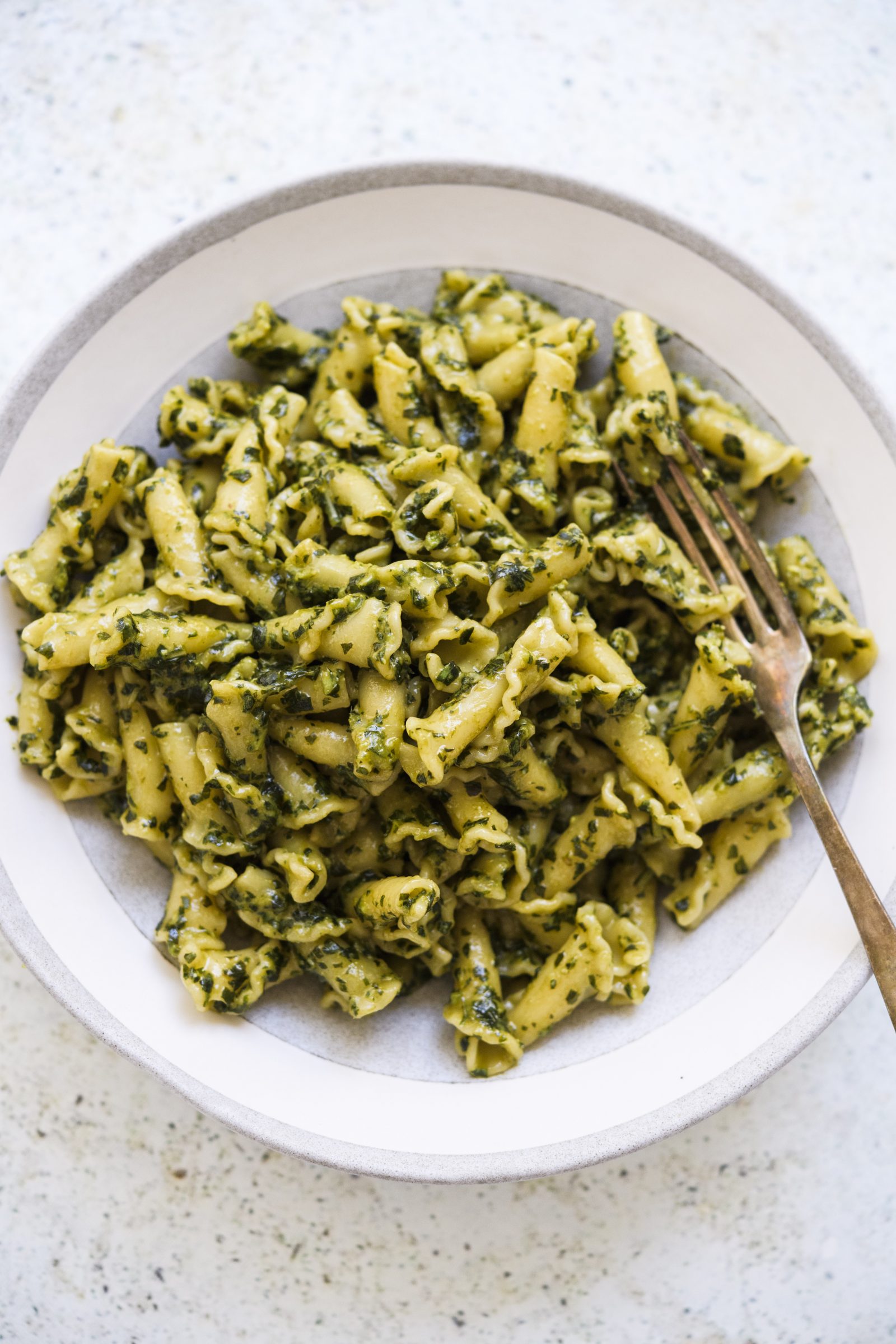Your email address is required to begin the subscription process. We will use it for customer service and other communications from Milk Street. You can unsubscribe from receiving our emails at any time.

Pesto alla Genovese
We learned to make pesto alla Genovese in its birthplace—Genoa, Italy. It traditionally is made in a mortar and pestle of nothing more than basil, pine nuts, cheese, garlic, salt and olive oil, emphasis on the basil. We use a food processor for convenience but follow the tradition of processing ingredients separately to ensure we preserve the appropriate texture of each. Good quality cheese is essential for a rich, full-flavored pesto. Seek out true Italian Parmesan cheese, as well as pecorino Sardo, a sheep’s milk cheese from Sardinia. If you can’t find pecorino Sardo, don’t use pecorino Romano, which is too strong. The best substitute is Manchego, a Spanish sheep’s milk cheese. To store pesto, press a piece of plastic wrap against its surface and refrigerate for up to three days.
1
cup
Don't toast the pine nuts. In Italy, the pine nuts for pesto are used raw. Don't be tempted to add all the ingredients at once to the food processor. Adding them in stages ensures the pesto has the correct consistency and texture, and that it won't end up thin and watery, the result of overprocessing.
30 minutes
Ingredients
-
1¾
ounces Parmesan cheese (without rind), chopped into rough 1-inch pieces
-
1
ounce pecorino Sardo cheese (without rind), chopped into rough 1-inch pieces
Directions
-
01In a food processor, process both cheeses until broken into rough marble-sized pieces, about 10 seconds, then pulse until they have the texture of coarse sand, 5 to 10 pulses, scraping the bowl as needed. Transfer to a small bowl.
Pardon the interruption
You need to be a Milk Street Digital Member to see the full recipe
JOIN MILK STREET DIGITAL & PRINT
12 WEEKS FOR JUST $1
and get access to all of our recipes and articles online, as well as in print.
GET DIGITAL & PRINTHow can i transpose this and most of your other recipies for 2 servings. I have made many of your recipies and always have too much left over which is not a problem but i ended up having a refrigerator full of leftovers but want to always try something new?
I’m curious as to why this recipe says “Don't toast the pine nuts. In Italy, the pine nuts for pesto are used raw.” When my 1st edition 1969 Ada Boni ‘Italian Regional Cookbook’ translated from Italian says to toast the pine nuts...it’s a rather bold sweeping statement about this now ubiquitous sauce.
Hi David -
When we traveled to Genoa we spoke with the preeminent expert on pesto in the region of its origin, Roberto Panizza, who told us that the pine nuts should always be raw. You can read the story about our visit and our conversations with Roberto at this link: https://www.177milkstreet.com/2018/08/for-the-best-pesto-let-the-basil-shine or in the upper right hand corner of this page.
Best,
The Milk Street Team
Best pesto ever. I have made this many times now. First, I love not having to toast the pine nuts. Second, using Manchego as a substitute is amazing and easily found. I do microwave the garlic in a little olive oil prior to processing as that helps tone it down for our group who have little garlic tummy issue.
How much pasta should I cook to use an entire recipe of pesto as written? Will I need to use pasta water to get this dish to the correct consistency?


Can this recipe be made with a substitute for, or without, pine nuts? We have a minor allergy to pine nuts and would consequently like to avoid them. I love pesto though... just need a substitute item.